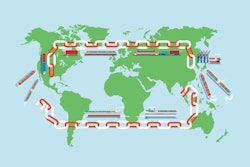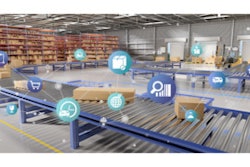
2021 was full of supply chain disruptions. From natural disasters and ransomware attacks to ships stuck at sea and a global pandemic that just won’t go away, the supply chain industry went from being upended to somewhat mended to now trying to overcome bottlenecks amid a workforce shortage.
But, it’s important to understand that supply chain disruptions will always occur, pandemic or not, just in different ways, forms and times.
In Food Logistics’ Jan/Feb 2022 issue, editor-in-chief Marina Mayer talks with several industry experts about how to mitigate supply chain threats for tomorrow and beyond.
Here’s an interview with Ahmed Samnan, VP, PartnerLinQ, who explains why ensuring supply chain visibility is the No. 1 way to mitigate supply chain threats, with excerpts publishing in Food Logistics’ Jan/Feb 2022 issue. [CLICK HERE to read the article in full].
Food Logistics: 2021 was full of supply chain disruptions, i.e., natural disasters, global pandemic, ransomware attacks, ships stuck at sea and more. Heading into the New Year, what are some other disruptions you see posing threats to our nation’s cold food and beverage supply chains? And, why?
Ahmed Samnan: It seems likely that many of the pressures that have impacted the global supply chain in 2020-21 will continue into the foreseeable future. Storage and transportation cost pressures pose a threat as demand for cold storage and refrigerated transportation comes up against capacity shortages and the shortage of truck drivers that we see today.
Food Logistics: How do the supply chain disruptions of 2020 and 2021 differ (or are similar) from what to expect in 2022?
Samnan: The disruptions of 2022 will likely be similar to those faced over the past two years. While paper towels can be stockpiled to avoid supply chain disruptions, that doesn’t work for meat, eggs and food items with a fixed sell by date.
The No. 1 issue is likely to remain constrained warehousing and driver/trucking shortages. No one is predicting widespread food shortages in 2022, but narrower product shortages will continue to be an issue for manufacturers as they struggle to meet demand, and this will drive up costs, especially for retailers who currently lack visibility and resiliency in their supply chain.
Food Logistics: What are some things the cold food and beverage industry can do right now to mitigate supply chain threats throughout the chain? I.e., Implement technology, etc. Please be specific.
Samnan: The No. 1 thing to do is to ensure supply chain visibility. Supply and demand forecasting requires an accurate set of data. Getting and maintaining an accurate set of data requires access to near real-time data, which means proactive planning and efforts to increase visibility into both sides of your supply chain. This begins with improvements in business communication. By planning now to increase visibility and improve planning, businesses can avoid issues such as capacity and labor constraints which increase volatility. Investing in Tier 2 and Tier 3 supply chain visibility will be key.
Food Logistics: What advice do you have for those companies still struggling to mitigate supply chain threats?
Samnan: Do your due diligence. Invest in your supply chain to gain visibility over available to process and WIP. Many companies are panic buying, trying to get “something” done without regard to the realities of the still in flux “New Normal.” There is a new digital supply chain model out there that is both agile and flexible. You want to make the right choice when it comes to mitigating supply chain threats, so don’t get caught up in a panic buy. Continue your planning as you would in a normal year, but recognize that there is great potential for events and repercussions similar to what happened in 2020-21 to impact your supply chain again.
Food Logistics: What are some things not addressed above that may be pertinent to our readers regarding mitigating supply chain threats?
Samnan: The key is to stay out of panic mode and make an informed decision. It’s always a good idea to speak to subject matter experts and trusted advisors from the field before deciding. Many of these experts have been overcoming disruptions on a regular and prolonged basis, from long before the Great Disruption.
[CLICK HERE to read the article in full].



















